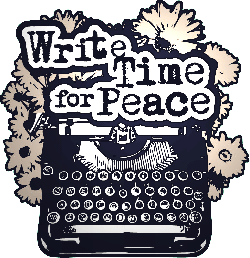There is a daunting dance to peacemaking that calls us to the messy margins of life. Ironically, it is in moving to the margins, stretching ourselves to the edges, that we are given the opportunity to encounter our sacred center – the quiet place that gives meaning, depth, and sustainability to our work.
Many of us have found that despite the exhilaration, there is a shadow side to the dance of doing when we allow ourselves to stay on the dance floor too long. We often find ourselves trying to manage the margins and manipulate the outcomes of situations which are beyond our control, often resulting in frustration, anger, and self pity.
Taken to the extreme, hanging around the margins without a taking a break results in messianic behavior that is ugly and sometimes dangerous to us and others. We begin to believe that we are Masters of the Dance as we arrogantly choreograph not only our only lives but the lives of those around us, including people halfway around the world.
As we drag our tired selves onto the dance floor in the belief that without us the music will stop, we find ourselves limping along on calloused feet, subsisting on coffee and candy bars, hardly models of the change we want to see in our world.
Yet, our work calls us to the margins. To those places in our world where people suffer and struggle. Places where fear and courage, hatred and compassion, despair and hope co-mingle and compete with one another. Places that break our hearts. War zones. Jails. Checkpoints. Soup kitchens. Places where people are persecuted, prosecuted, taunted, tortured, hungry, and hurting.
When we touch, even briefly, the margins of our world, we feel compelled to dance even if we are awkward and unsure of ourselves.
While we often find our passion and life’s work at the margins, we also encounter there our own shortcomings and limitations.
While for most of us, the problem is dancing on the margins for too long and not knowing when to sit one out in order to renew ourselves for the work ahead, there is another temptation that is equally pernicious. This is the refusal to fully enter the dance, to sit comfortably on the sidelines, to acquiesce to passivity and quietism, to assiduously avoid the margins where one’s pristine dancing shoes (not to mention one’s soul) are guaranteed to get scuffed up.
The refusal to enter the dance is sometimes couched in a pseudo-spiritual philosophy that demands little more than visualizing world peace and praying for an end to injustice. This disembodied, abstract approach sidesteps the messy and unpredictable nature of life on the edge.
To remain on the periphery of the dance floor is to avoid the complexity of life, dulling the compassion and commitment that come from a real engagement with people, not in the abstract but in all their maddening and magnificent particularity.
To refuse the dance entirely is to vote with one’s feet for personal comfort over active peacemaking. It is a stance that is more concerned with self preservation than with real transformation. Life becomes a solo interior dance in which one is moving to the beat of one’s own music, tone deaf to the songs of others.
While leaving the dance for a spell in order to rest and repair our tattered dancing shoes is crucial, we must eventually move back to the margins.
Ultimately, we must come to find a way to embrace the dialectical relationship of our inner and outer lives, the paradoxical dance from the center to the edges and then back again.
We must learn that there is a time to march and a time to meditate, a time to protest and a time to pray, a time to stand in stand in solidarity with others and a time to sit in solitude.
The good news is that we have many partners in this dance that we call peacemaking.
Michigan Peace Team Newsletter Winter 2010

